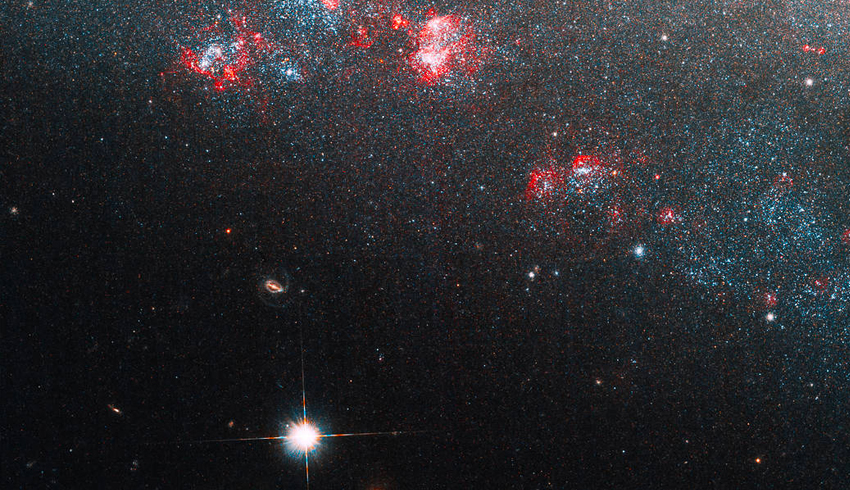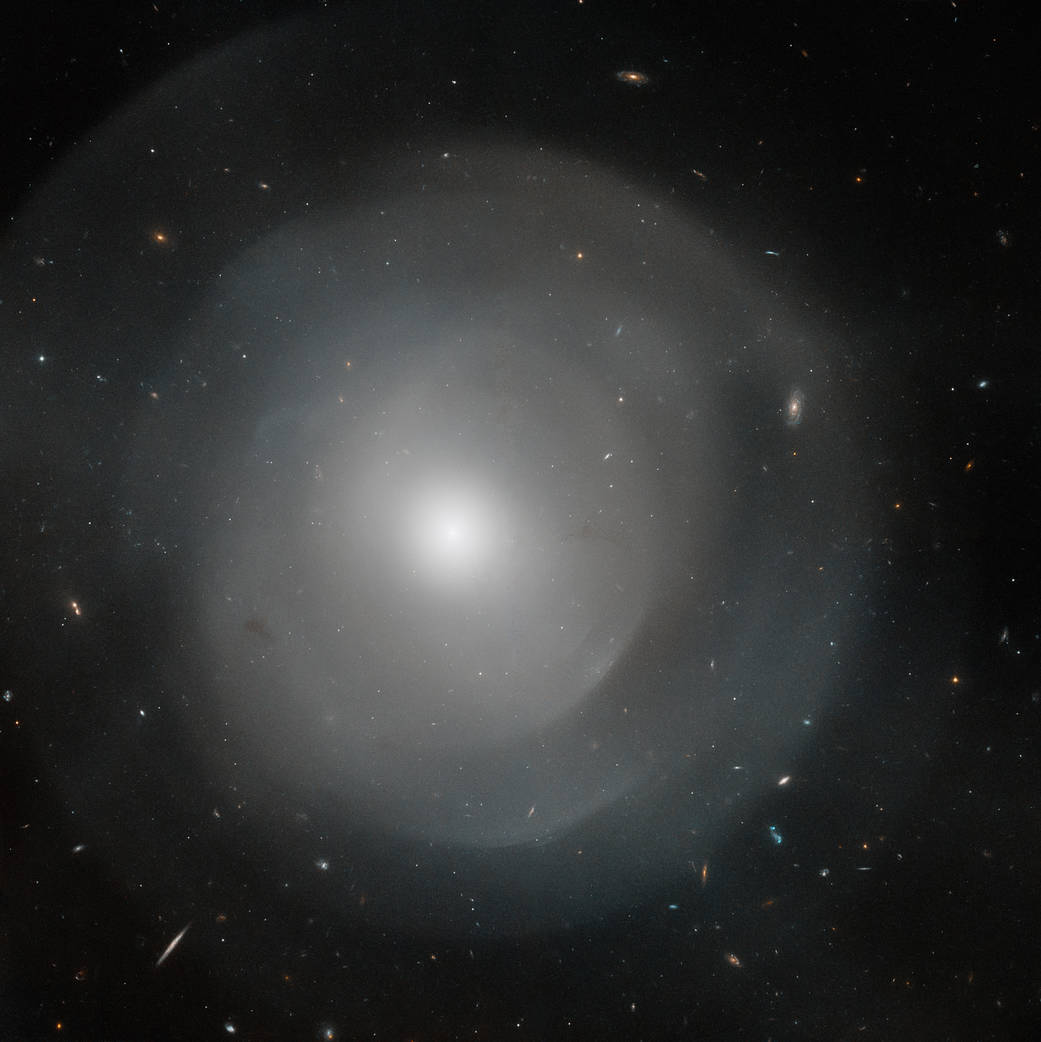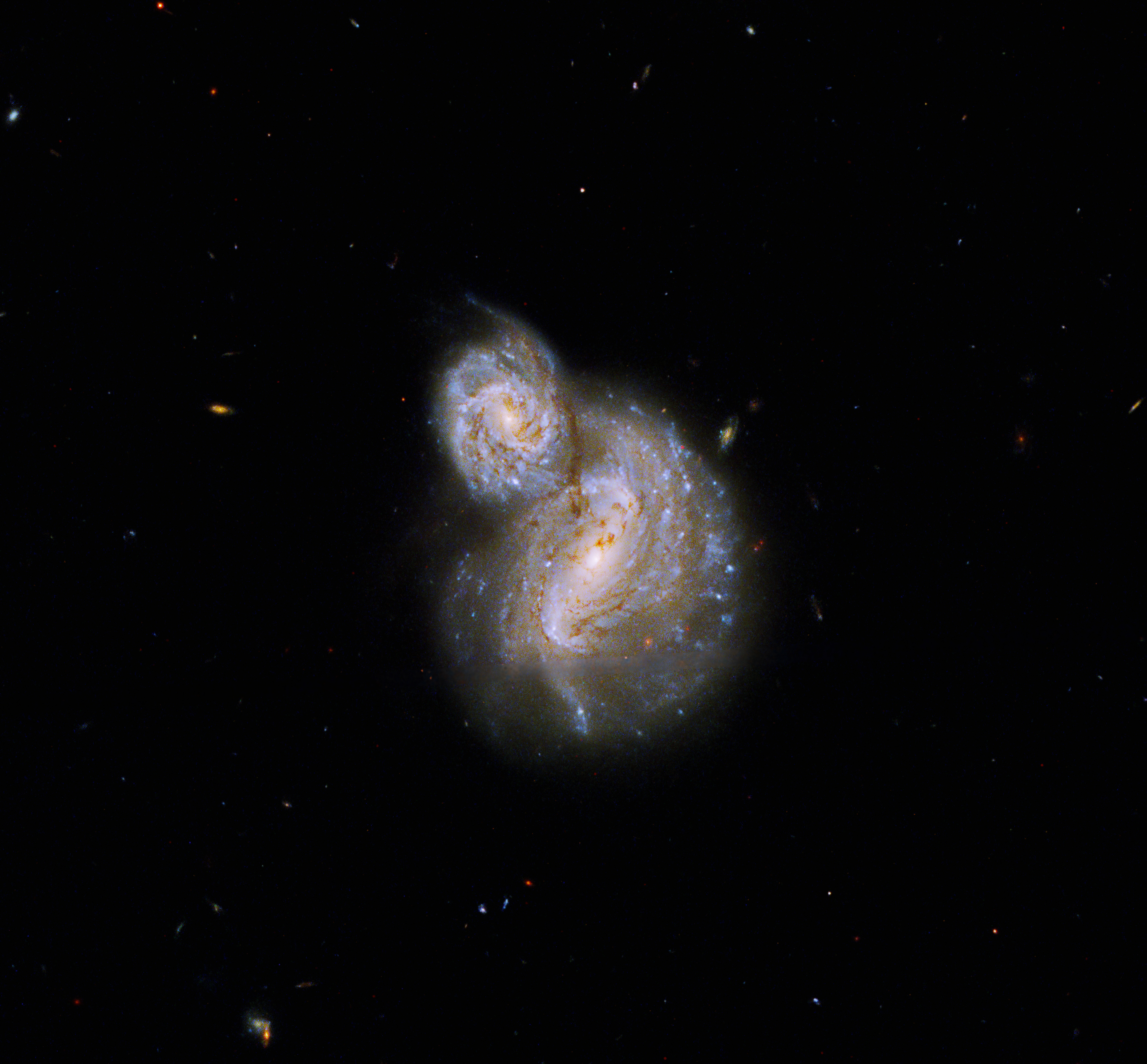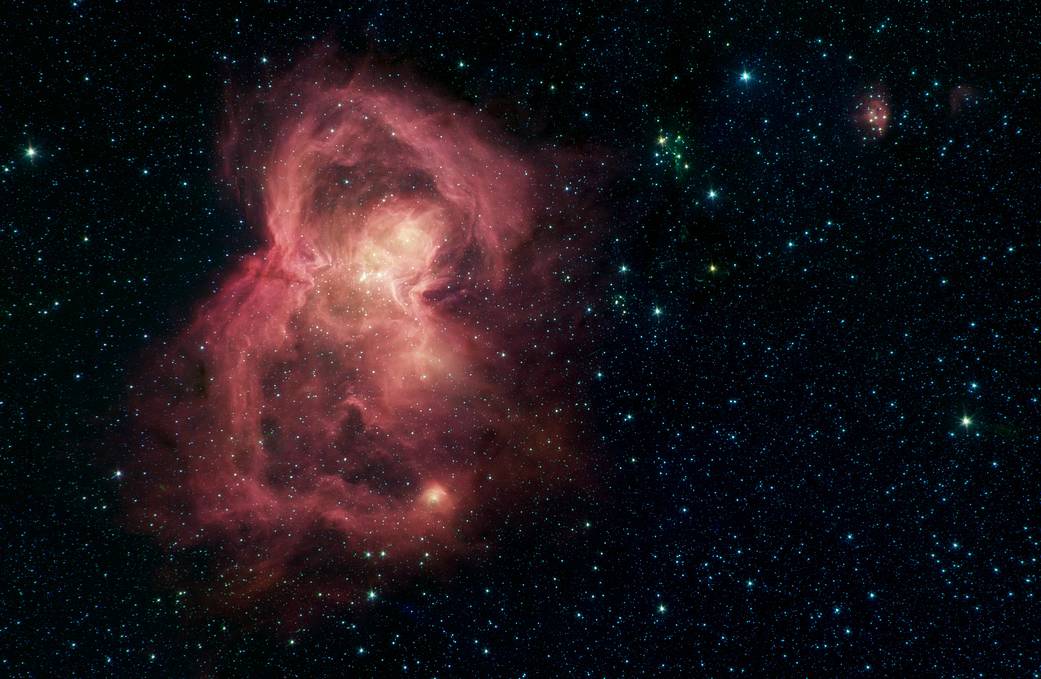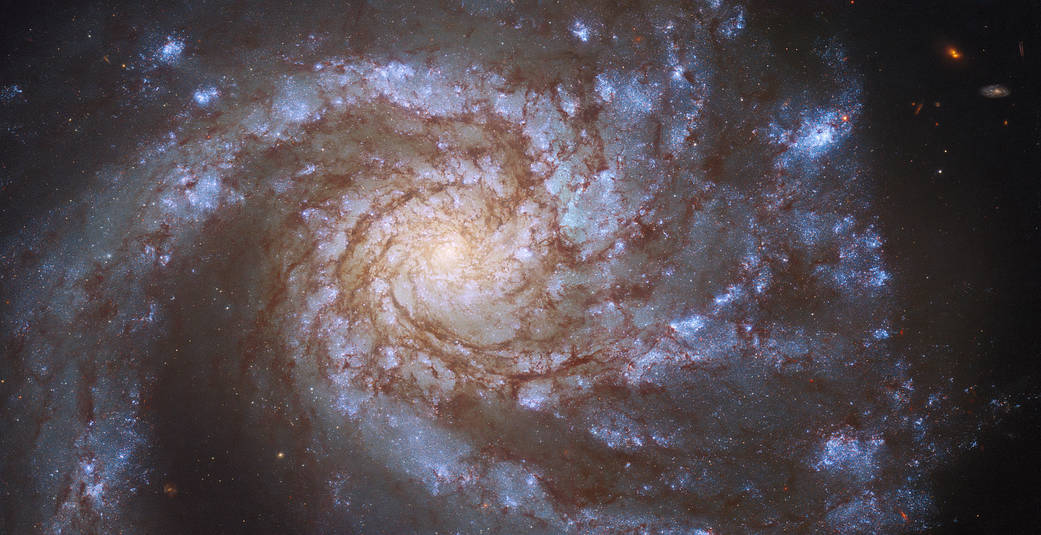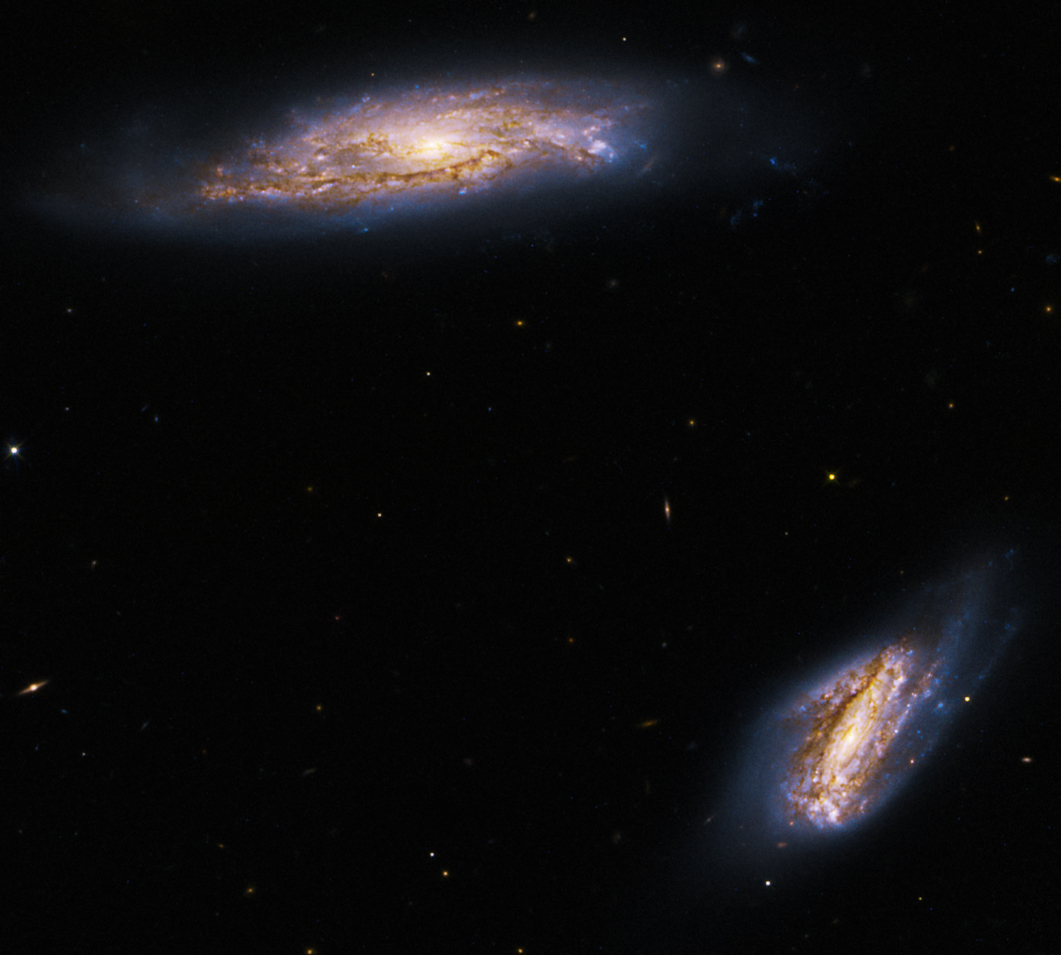
This new image captured by NASA’s Hubble Space Telescope and posted on 27 May shows two spiral galaxies, sitting 275 million light-years away from Earth.
Together, they are known as Arp 303. The galaxy on the bottom right is named IC 563, and the top left one is called IC 564. The galaxies are “very bright at infrared wavelengths”, according to NASA, and host many luminous star-forming regions.
This image, posted on 18 May and captured by Hubble, shows the central region of the gigantic elliptical galaxy NGC 474, located around 100 million light-years away from Earth.
The galaxy is huge, and spans about 250,000 light-years across – 2.5 times larger than the Milky Way. Its cloudy core is surrounded by layered shells, and while NASA says the cause of them is unknown, astronomers believe they may be the after-effects of the giant galaxy absorbing smaller ones.
This image is of the IC 4271, also dubbed Arp 40, and is a pair of spiral galaxies sitting around 800 million light-years away. The smaller galaxy is “superimposed” into the larger one, NASA says, and is also known as an active Seyfert galaxy. Active galaxies have supermassive black holes at their centre.
Seyfert galaxies have extremely bright emission lines, and they make up about 10 per cent of the universe. These active Seyfert galaxies are their brightest when seen in light outside of the visible spectrum, NASA says.
This image was published by NASA’s Spitzer Space Telescope on 13 April, and is a nursery of hundreds of baby stars, disguised as a red butterfly. It sits around 1,400 light-years away from the sun.
Dubbed W40, the butterfly is a nebula, which is a huge cloud of gas and dust in space where new stars often form, or the exploding result of a dying star according to NASA, the butterfly’s wings are made up of giant bubbles of hot, interstellar gas blowing from the largest and hottest stars in the region.
This collective image was released by NASA on 6 May and is an extreme close up of spiral galaxy M99, which sits around 42 million light-years away from Earth in the constellation Coma Berenices.
The spiral galaxy image is a combination of data from two sets of observations captured by Hubble’s Wide Field Camera 3. The first observation was to study the gap between novae and supernovae. The second was observing the connections between young stars and the clouds of cold gas they form, according to NASA.

Isabella Richards
Bella Richards is a journalist who has written for several local newspapers, her university newspaper and a tech magazine, and completed her Bachelor of Communications (Journalism) at the University of Technology Sydney in 2020. She joined Momentum Media in 2021, and has since written breaking news stories across Space Connect, Australian Aviation and World of Aviation.
You can email Bella on: [email protected]

